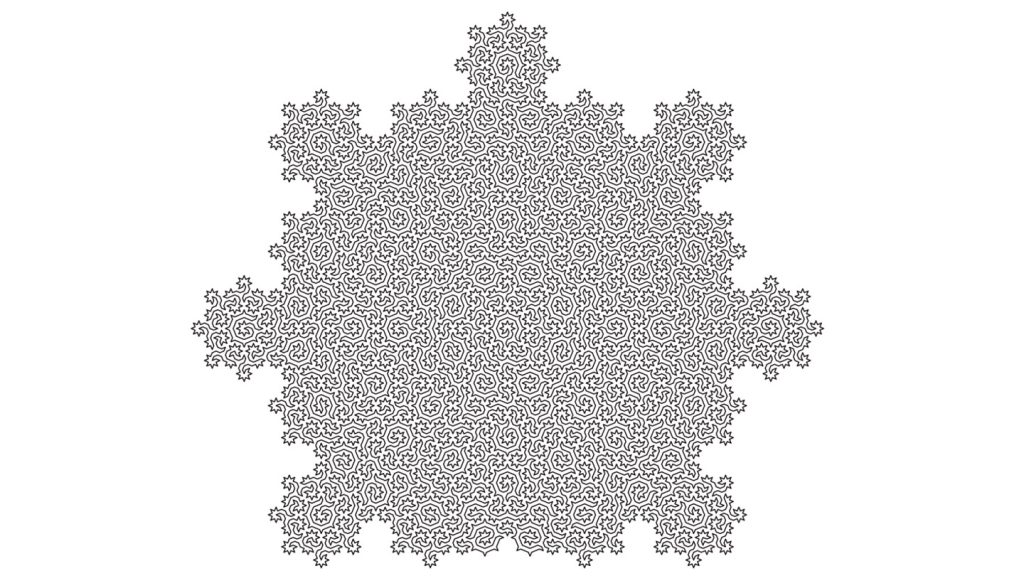Researchers at Cardiff University in Wales have discovered a unique path within a complex pattern known as an Ammann-Beenker tiling. This path, called a Hamiltonian cycle, connects every point on the tiling without crossing itself, creating a closed loop that can be traced without picking up a finger. This specific Hamiltonian cycle, found within the Ammann-Beenker tiling, may have potential applications in making certain quasicrystals more efficient catalysts, substances that reduce the energy required for a chemical reaction by allowing molecules to attach to their surface with maximum efficiency.
The Ammann-Beenker tiling consists of organized squares and rhombuses that fill a two-dimensional space in a pattern that does not repeat itself regularly. This type of pattern is similar to the arrangement of atoms in certain types of quasicrystals, which are ordered but non-repeating chemical structures. By identifying a Hamiltonian cycle within the Ammann-Beenker tiling, researchers have opened up possibilities for addressing scientific challenges through the utilization of these nonintersecting pathways to improve efficiency in various applications.
Solving a Hamiltonian cycle within such a complex pattern as the Ammann-Beenker tiling is a challenging task that requires careful consideration and analysis. By finding this specific cycle and potentially discovering others in different types of tilings, researchers may be able to develop new ways to apply these pathways to existing challenges. The team is looking to expand their research to search for additional Hamiltonian cycles in various types of tilings and explore novel applications that have not yet been considered.
The discovery of the Hamiltonian cycle within the Ammann-Beenker tiling opens up new possibilities for utilizing complex patterns in solving scientific challenges. By tracing a nonintersecting path that connects every vertex on the tiling without crossing itself, researchers have identified a potential solution that could lead to more efficient catalysts and other applications. Moving forward, the team will continue to explore different types of tilings to uncover additional Hamiltonian cycles and investigate new ways to apply these pathways to address scientific problems.
Understanding the unique properties of complex patterns like the Ammann-Beenker tiling is crucial for developing innovative solutions to scientific challenges. By studying the organization of squares and rhombuses in a non-repeating pattern, researchers have identified a Hamiltonian cycle that could have significant implications for improving the efficiency of catalysts and other substances. This research highlights the importance of exploring unconventional pathways within intricate patterns to find solutions that can enhance various scientific applications.
Overall, the discovery of a Hamiltonian cycle within the Ammann-Beenker tiling represents a significant advancement in the field of theoretical physics and materials science. By identifying a nonintersecting pathway that connects every point on the tiling without crossing itself, researchers have laid the foundation for potential applications in catalysis and other scientific fields. The team’s ongoing research into different types of tilings and the search for additional Hamiltonian cycles demonstrates the potential for innovative solutions to complex scientific challenges by leveraging the unique properties of intricate patterns.


